This post may contain affiliate links. Please read our disclosure policy.
I’m showing you how to sprout/grow mung beans in just four days with simple methods using a colander or similar items in this post. You will have fresh and nutritious mung bean sprouts whenever you want. Step-by-step photos and a video are included for your reference.
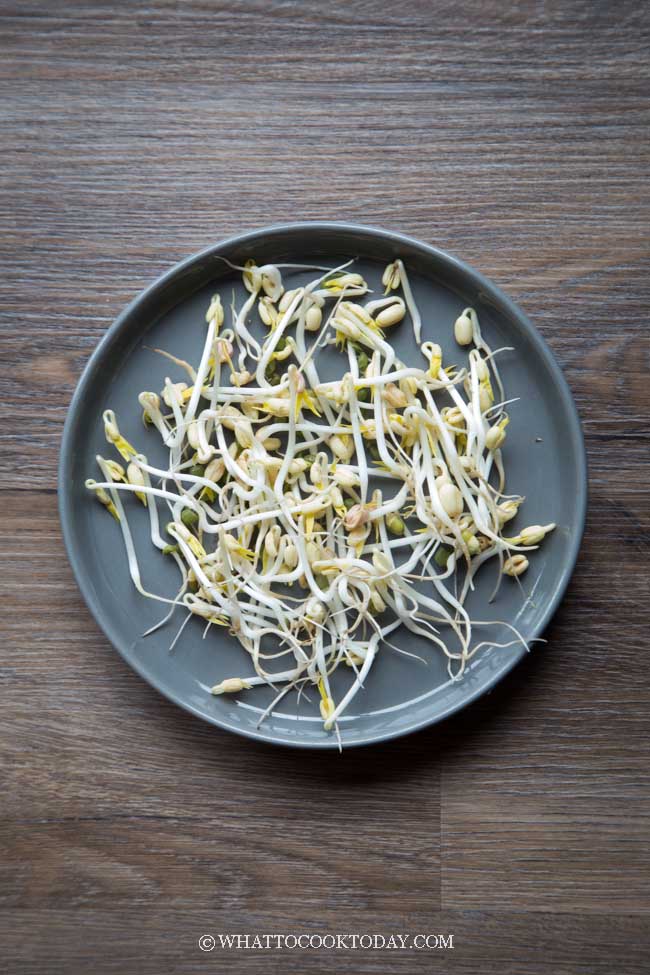
WHY YOU SHOULD GROW YOU OWN BEAN SPROUTS
1. FRESH ANYTIME YOU WANT
I buy bean sprouts every time I go to Asian grocery store. It’s one of the ingredients I use often in many Asian stir-fry recipes. The thing about bean sprouts is they don’t last for a long time, especially if you buy them from the store. Who know how long they have been sitting at the store and by the time you bring them home, they usually only last for 2-3 days before they turn into a mush completely. A while ago I wrote this how to keep bean sprouts fresh longer and even with that, it can only extend for up to 5 days max.
2. EASY TO SPROUT/GROW
They are really easy to sprout or grow. You don’t need any fancy equipments or tools
3. THEY KEEP LONGER IN THE FRIDGE
When you sprout them yourself at home, they actually keep fresh longer in the fridge than the store-bought ones
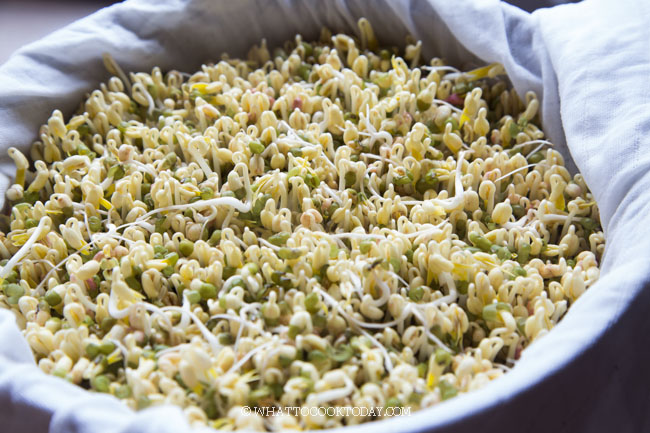
HOW TO SPROUT/GROW MUNG BEANS IN 4 DAYS
1. Determine how much beans to grow
First, we need to determine how much beans you can grow. This is determined by the size of the colander or basket you have. Spread one layer of dried green beans lined with cheesecloth. The beans should only occupy about 2/3 of the size of the container because the beans will expand after soaking. You don’t want to overcrowd as the beans will not sprout properly
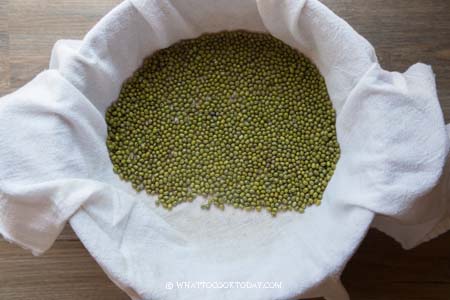
2. Soak the beans
Soak the dried green beans in clean water for 24 hours.
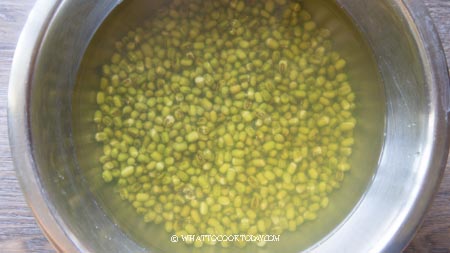
After that drain off the soaking water. You will see tiny white tails on most of the beans. The dormant beans have now “awakened”. Discard any bad beans
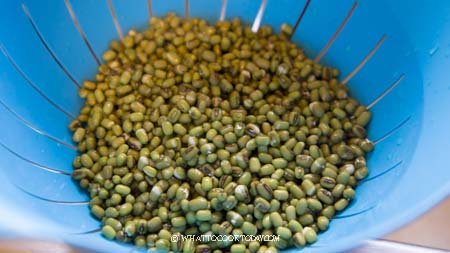
3. Set up
I use my steamer tray that comes with a pot underneath. You can use a colander and put it over a pot to collect water
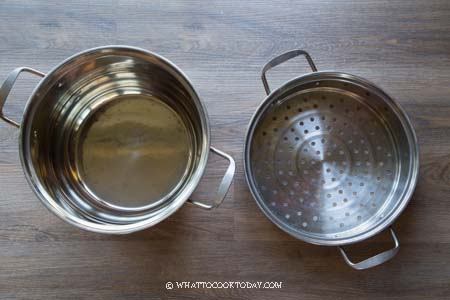
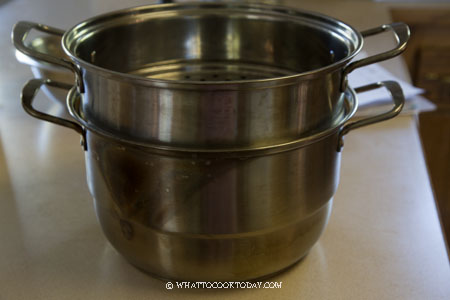
Wet the cheesecloth with some water and wring out any excess water. Place the cheesecloth over the colander
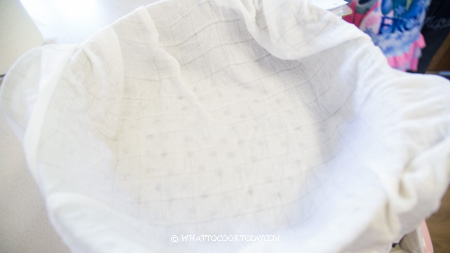
Spread the soaked beans evenly in one layer on top of the cheesecloth
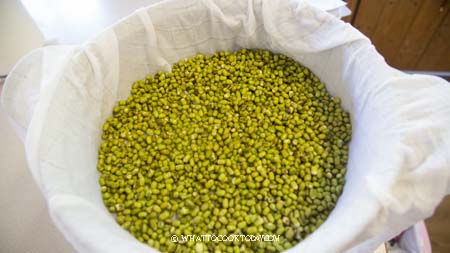
Fold the cheesecloth over the beans to cover
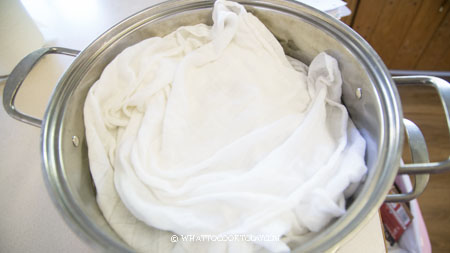
Water with some water.
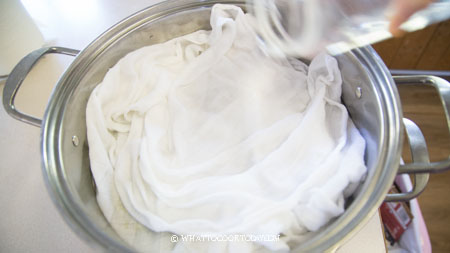
Cover with a dark cloth and place in somewhere dark, away from any direct light. The perfect temperature is about 70 -80 F (20-27 C). Remember to water the beans twice every 24 hours. I do it in the morning and at night. Discard excess water collected in the pot
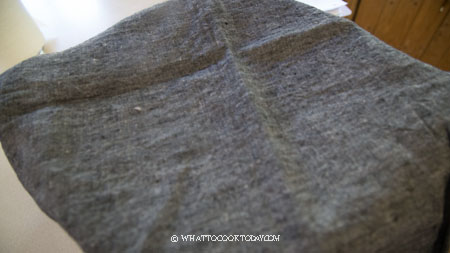
4. Monitor growth
Day 1
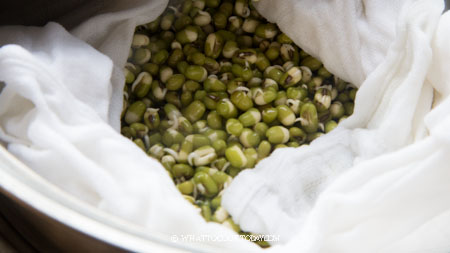
Day 2
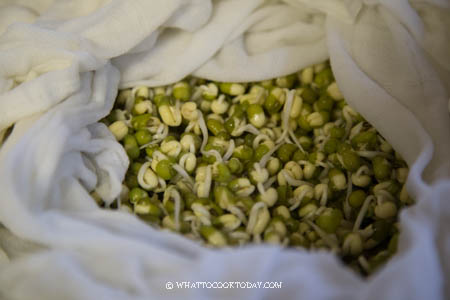
Day 3
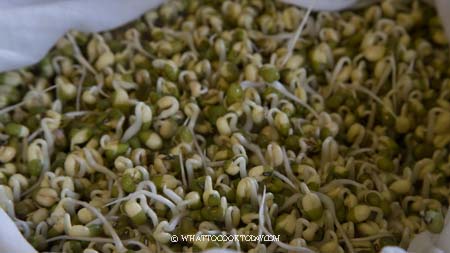
Day 4
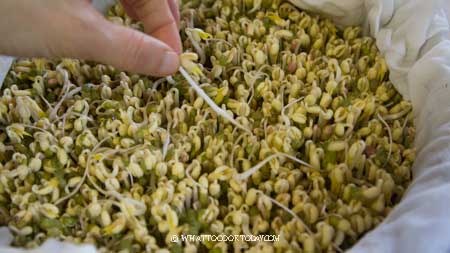
When you see most of the sprouts have grown some leaves on the heads, that’s a good indication to stop sprouting too because if you continue to sprout them, they will start losing nutrients

5. Harvest
Gently remove the beans from the cheesecloth. Pick off the tails if you like, it’s not mandatory. You can use them right away in cooking. Refer to how to keep mung bean sprouts fresh longer
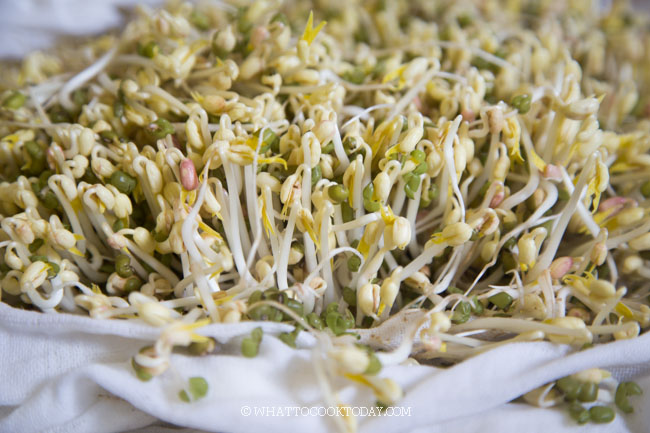
RECIPE IDEAS
I love fresh bean sprouts. They can be used in many Asian recipes as a main ingredient or one of the ingredients in recipes like these:
DID YOU SPROUT SOME MUNG BEANS?
I love it when you guys snap a photo and tag to show me what you’ve made 🙂 Simply tag me @WhatToCookToday #WhatToCookToday on Instagram and I’ll be sure to stop by and take a peek for real!
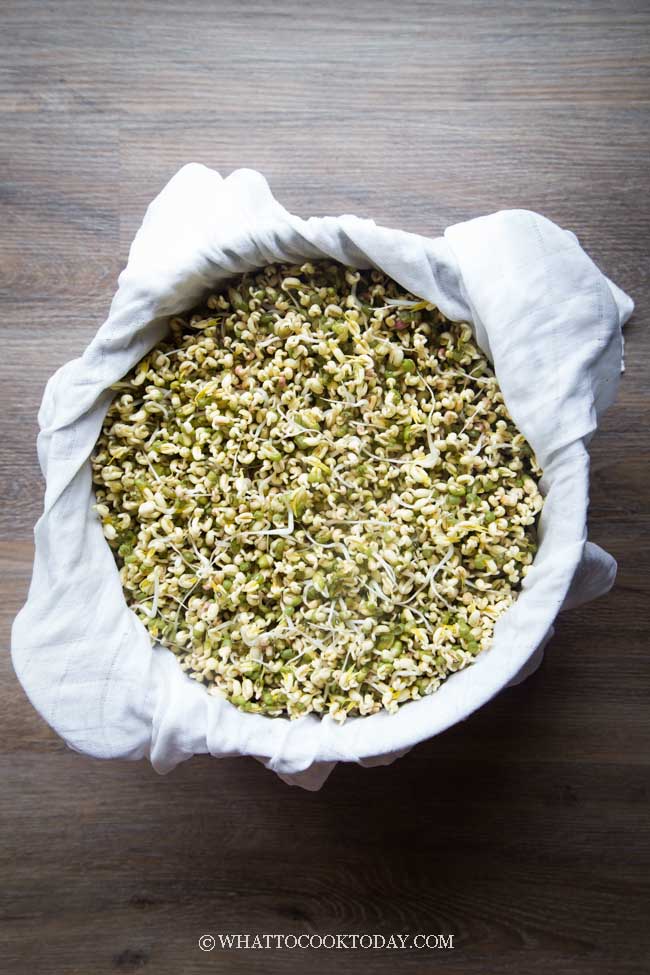
How To Sprout Mung Beans (Mung Beans Sprouts)
Ingredients
- Dried green beans
- Water
Instructions
Determine how much beans to sprout:
- We need to determine how much beans you can grow. This is determined by the size of the colander or basket you have
- Spread one layer of dried green beans lined with cheesecloth. The beans should only occupied about 2/3 of the size of the container because the beans will expand after soaking. You don't want to overcrowd as the beans will not sprout properly
Soak the beans:
- Soak the dried green beans in clean water for 24 hours. After that drain off the soaking water. You will see tiny white tails on most of the beans. The dormant beans have now "awakened"
Set up:
- Place the colander on top of a pot (to collect water). In my case, I use a steamer tray with its pot underneath it
- Wet the cheesecloth with some water and wring out any excess water. Place the cheesecloth over the colander. Spread the soaked beans evenly in one layer on top of the cheesecloth. Fold the cheesecloth over the beans to cover. Water with some water. Cover with a dark cloth and place in somewhere dark, away from any direct light. The perfect temperature is about 70 -80 F (20-27 C). Remember to water the beans twice every 24 hours. I do it in the morning and at night. Discard excess water collected in the pot
Watch for growth:
- It takes about 4 days to grow to a good size, about 2-3 inches in length. When you see most of the sprouts have grown some leaves on the heads, that's a good indication to stop sprouting too because if you continue to sprout them, they will start losing nutrients
Harvest:
- Gently remove the beans from the cheesecloth. Pick off the tails if you like, it's not mandatory. You can use them right away in cooking. Refer to how to keep mung bean sprouts fresh longer
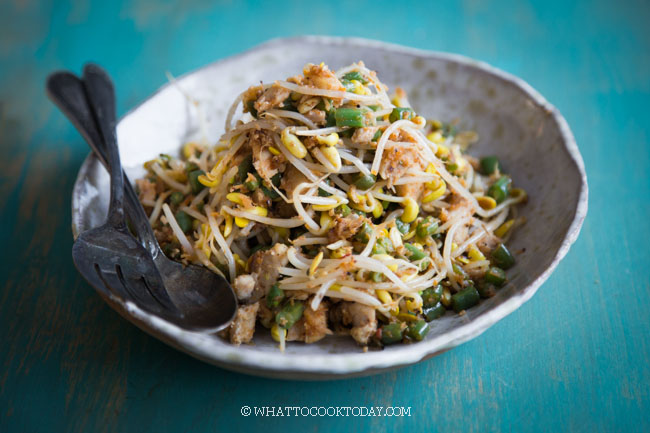
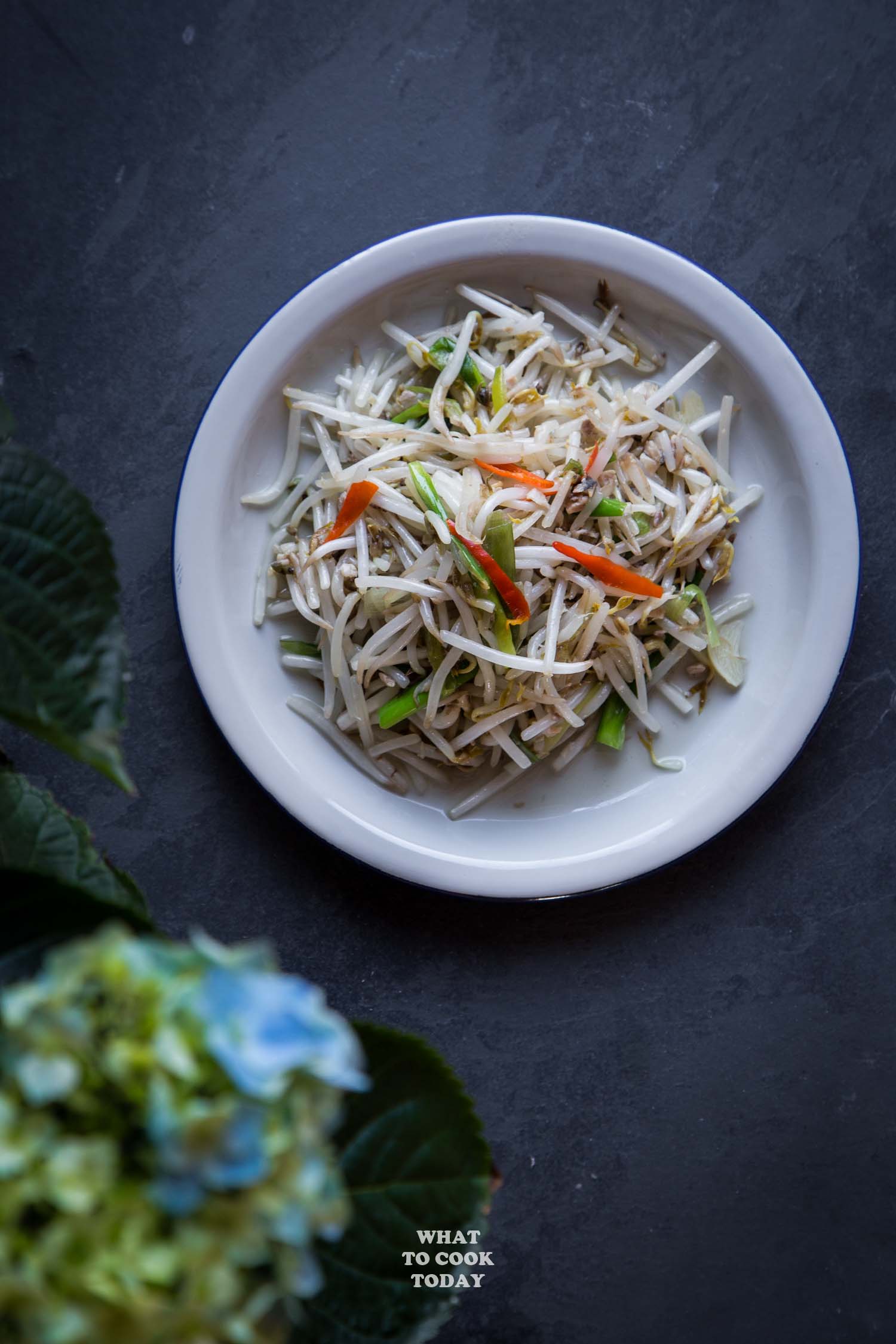

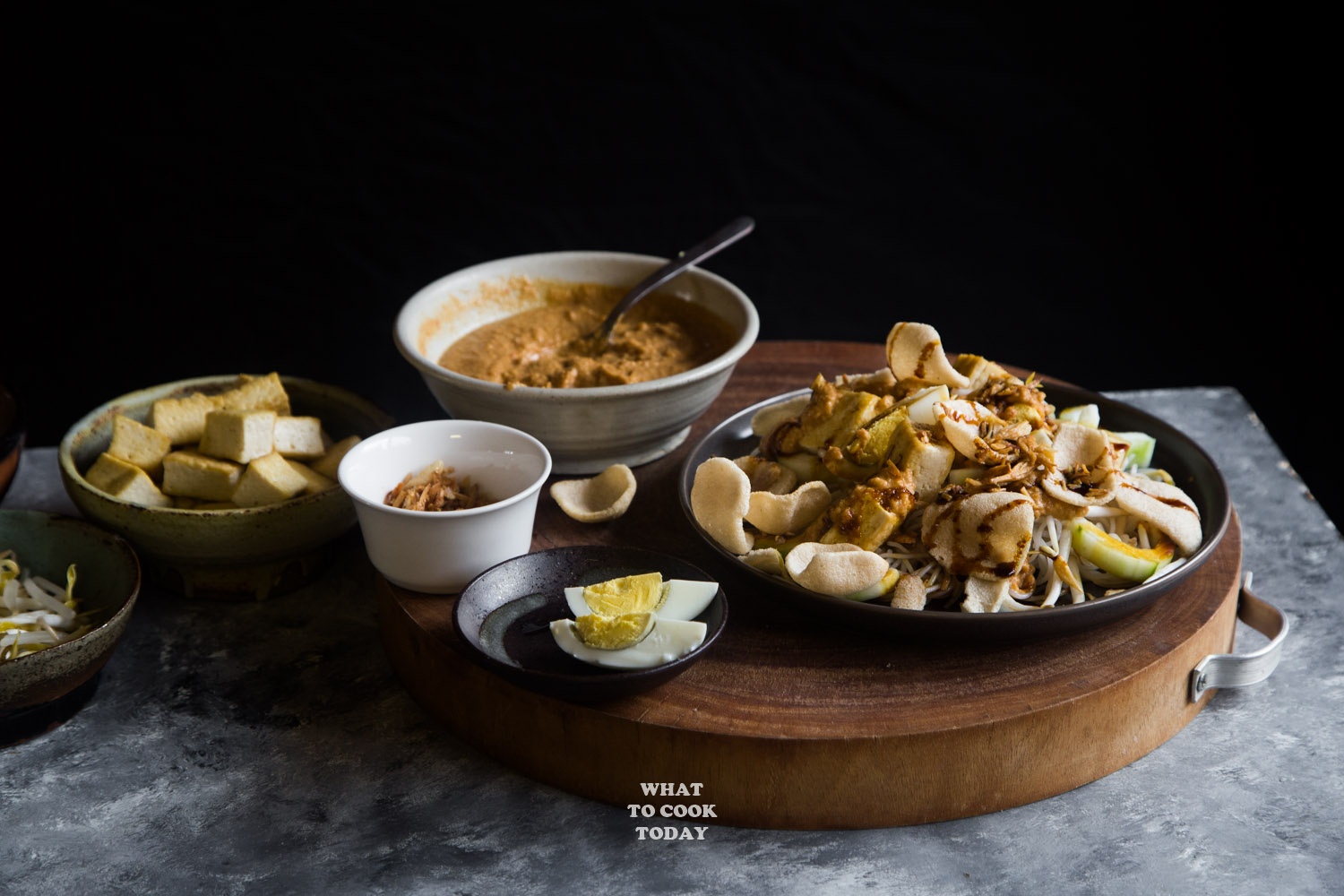
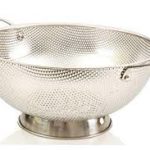

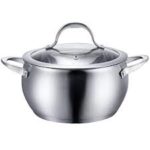

13 comments
So I’d been trying my hand at mung sprouts for a while and I think I’m finally at the point where I can say I’ve got it. I’ve followed a fair number of tutorials with fair success, and I have botched a few as well. The key tip from this particular post that helped me was to keep with 1 layer of beans in whatever container you use. Over-crowding always leads to under-sized sprouts, which also makes them prone to rot!
A useful tip I saw from somewhere on YouTube was to use plastic solo cups (I use ones that are milky-translucent rather than solid red) and it’s the perfect yield for me. I’ve done it in a colander before and I had so many I was struggling to figure out what to do with them within the week! The plastic cup makes about a big handful of sprouts, which is perfect for the one-off stir-fry. I use maybe a tablespoon of beans and my sprouts are fresher and even longer than the stores! Basically, one plastic cup is punctured with holes and sits inside another cup to catch water, and a wet cloth is gently balled-up and smooshed over it. I keep it in a cloth pouch that blocks the light. On hot days they grow lickety-split hahahah!
I’m so grateful that you shared the plastic solo cups tips with me. I will try again very soon and see how it goes for me 😉
I’m pretty sure the video I saw on YT is called “How To Grow Bean Sprouts In Plastic Cups”. Super basic, practical, and not trying to sell a fancy sprouting kit like many other vids. The only downsides is that beans can get stuck in the little ridge around the bottom, and locality effects growing conditions (it’s pretty cold/ dry here most of the year).
Noted! I’ll check it out! Thank you!!!
Hi, my mung beans went into bionic growing mode and now I have saplings! Or baby plants…. What shall I do with them? Can I eat the green leaves/shoots?
How many days did you sprout them? As far as I know, the leaves are edible too.
How do you determine what is a “bad” sprout?
Hi Beverly, anything that doesn’t look good, kinda mushy or wilted or sometimes smells “funky”, I would throw it out.
I love the idea of using your steamer for these! I usually use just a colander and bowl for mine. What are your thoughts on using a bamboo steamer for this? I would love to have another use for it since it doesnt get the love it should usually. Do you think it would hold up ok or would they potentially sprout into the wood?
Hi Sylvia, I won’t suggest using the bamboo steamer because the sprouts will stain the bamboo steamer. It’s harmless, but your bamboo steamer won’t be visually attractive anymore after that 🙂
This is a very useful tutorial! Thank you for sharing your expertise, I am really looking forward to sprouting some mung beans following your tips. Even though we love to eat them at home I share in your frustration about struggling to keep them fresh and never knowing how long they have already spent at the store. This is going to be a fun and delicious project!
It is a fun project Milena. I hope you enjoy doing it 🙂 My kids get excited when they see my sprouting some mung beans 🙂